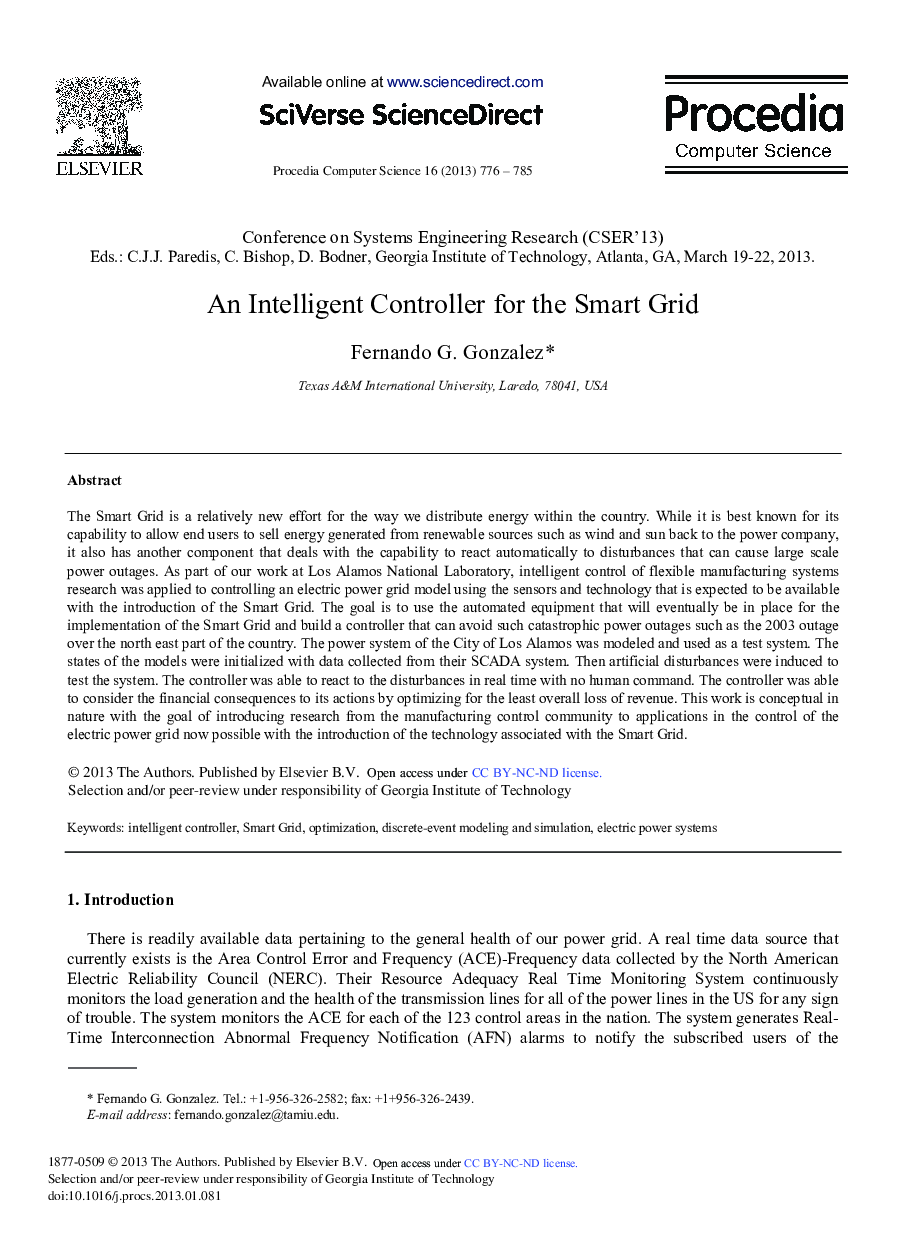| Article ID | Journal | Published Year | Pages | File Type |
|---|---|---|---|---|
| 486627 | Procedia Computer Science | 2013 | 10 Pages |
The Smart Grid is a relatively new effort for the way we distribute energy within the country. While it is best known for its capability to allow end users to sell energy generated from renewable sources such as wind and sun back to the power company, it also has another component that deals with the capability to react automatically to disturbances that can cause large scale power outages. As part of our work at Los Alamos National Laboratory, intelligent control of flexible manufacturing systems research was applied to controlling an electric power grid model using the sensors and technology that is expected to be available with the introduction of the Smart Grid. The goal is to use the automated equipment that will eventually be in place for the implementation of the Smart Grid and build a controller that can avoid such catastrophic power outages such as the 2003 outage over the north east part of the country. The power system of the City of Los Alamos was modeled and used as a test system. The states of the models were initialized with data collected from their SCADA system. Then artificial disturbances were induced to test the system. The controller was able to react to the disturbances in real time with no human command. The controller was able to consider the financial consequences to its actions by optimizing for the least overall loss of revenue. This work is conceptual in nature with the goal of introducing research from the manufacturing control community to applications in the control of the electric power grid now possible with the introduction of the technology associated with the Smart Grid.
